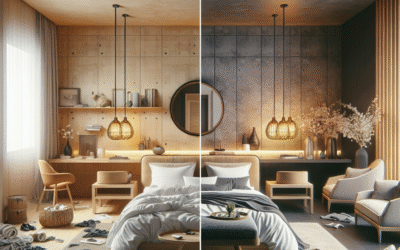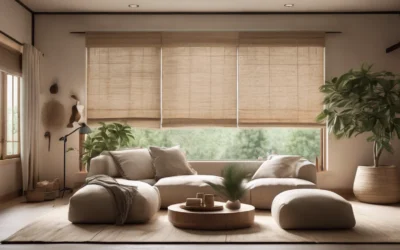
<h1>Japandi Style and Minimalist Lighting Ideas</h1>
<section>
<p>Imagine stepping into a space where tranquility meets functionality—a design ethos that draws from both Japanese and Scandinavian aesthetics. Welcome to Japandi style! In this article, we will delve into Japandi style and minimalist lighting ideas that not only enhance your interior but also contribute to a peaceful mindset.</p>
<p>Understanding the blend of minimalism and warm Japanese influences is essential. This article will guide you through the key elements of Japandi design, the role of minimalist lighting, and practical tips to create your serene sanctuary.</p>
<p>Our roadmap includes:</p>
<ul>
<li>Understanding Japandi Style</li>
<li>The Importance of Lighting in Japandi Design</li>
<li>Key Minimalist Lighting Ideas</li>
<li>Combining Colors and Textures</li>
<li>Practical Implementation Tips</li>
<li>FAQs about Japandi Style and Lighting</li>
</ul>
</section>
<h2>Understanding Japandi Style</h2>
<section>
<p>Japandi style encapsulates the best of both worlds—Japanese minimalism and Scandinavian functionality. This aesthetic promotes simple living through natural materials, neutral color palettes, and an emphasis on craftsmanship.</p>
<h3>Core Principles of Japandi Design</h3>
<ul>
<li><strong>Functionality:</strong> Every piece should serve a purpose.</li>
<li><strong>Natural Materials:</strong> Use of wood, textiles, and ceramics.</li>
<li><strong>Neutral Color Schemes:</strong> Soft whites, greens, and earthy tones.</li>
<li><strong>Minimalism:</strong> Keep clutter to a minimum.</li>
</ul>
<h3>The Emotional Connection</h3>
<p>Japandi style fosters a calming environment, appealing not only to aesthetics but also emotional well-being. The design encourages mindfulness, leading to moments of peace in our bustling lives.</p>
</section>
<h2>The Importance of Lighting in Japandi Design</h2>
<section>
<p>Lighting serves as a crucial component in any design style, but in Japandi, it plays an essential role in creating an inviting atmosphere. The right lighting balances function and form, enhancing the serene qualities of the space.</p>
<h3>Types of Minimalist Lighting Techniques</h3>
<ul>
<li><strong>Ambient Lighting:</strong> Soft, diffused light that serves as the main illumination.</li>
<li><strong>Task Lighting:</strong> Focused lighting for specific areas like reading nooks or kitchen counters.</li>
<li><strong>Accent Lighting:</strong> Highlights a particular area or object, adding depth to the design.</li>
</ul>
<h3>Natural vs. Artificial Lighting</h3>
<p>Natural light is favored in Japandi design. Large windows, unobstructed views, and light-filtering shades allow for a seamless flow of the outdoors into your living space. However, when natural light is limited, carefully chosen artificial lighting can perfectly mimic its soft glow.</p>
</section>
<h2>Key Minimalist Lighting Ideas</h2>
<section>
<p>To successfully integrate lighting in Japandi design, consider these minimalist lighting ideas that enhance tranquility and functionality.</p>
<h3>Sustainable Lighting Choices</h3>
<p>Opt for sustainable materials such as bamboo or reclaimed wood. These choices resonate with the ethos of Japandi and create a warm, inviting atmosphere.</p>
<h3>Layered Lighting Solutions</h3>
<p>Implement multiple sources of light to create layers. Combining ambient, task, and accent lighting can enhance the mood and functionality of each space.</p>
<h3>Statement Fixtures</h3>
<p>Consider a statement light fixture that embodies the Japandi style—think pendant lights with clean lines or sculptural floor lamps that draw the eye without overwhelming the room.</p>
<h3>Light Colors and Warmth</h3>
<p>Use warm, adjustable LED bulbs to create a cozy ambiance. Soft light contributes to relaxation, making it ideal for living spaces and bedrooms.</p>
</section>
<h2>Combining Colors and Textures</h2>
<section>
<p>Color and texture play significant roles in Japandi design. The thoughtful combination can elevate your minimalist lighting approach.</p>
<h3>Color Palette Selection</h3>
<p>Sticking to neutral colors allows for a more cohesive look. Soft tones, earthy shades, and natural hues harmonize perfectly with the simplicity of Japandi.</p>
<h3>Textural Contrast</h3>
<p>Add layers of texture through textiles, ceramics, and wood. Ensure your lighting complements these textures for a well-rounded appearance.</p>
</section>
<h2>Practical Implementation Tips</h2>
<section>
<p>Once you understand the principles and ideas, here are some practical steps you can take:</p>
<ul>
<li>Assess your space for natural light availability.</li>
<li>Choose a core color scheme that aligns with the Japandi aesthetic.</li>
<li>Incorporate multiple light sources for functionality and ambiance.</li>
<li>Invest in quality over quantity—select a few key pieces that resonate with your style.</li>
</ul>
<p>Start small and gradually refine your space to match your vision of serenity and functionality.</p>
</section>
<h2>FAQs about Japandi Style and Lighting</h2>
<section>
<details>
<summary><strong>What is Japandi style?</strong></summary>
<p>Japandi is a design style that merges Japanese minimalism with Scandinavian functionality, focusing on simplicity, natural materials, and a neutral color palette.</p>
</details>
<details>
<summary><strong>How do I incorporate minimalist lighting?</strong></summary>
<p>Layer different types of lighting, choose warm bulbs, and use sustainable materials to create a serene ambiance that complements the design aesthetic.</p>
</details>
<details>
<summary><strong>What colors are best for Japandi?</strong></summary>
<p>Opt for soft whites, beige, earthy greens, and muted browns to create a harmonious and peaceful environment.</p>
</details>
<details>
<summary><strong>Can I mix styles in Japandi design?</strong></summary>
<p>While staying true to Japandi elements, subtle incorporation of other styles can create an eclectic look without overwhelming the core aesthetic.</p>
</details>
<details>
<summary><strong>What materials should I avoid?</strong></summary>
<p>Avoid overly bright colors and flashy materials like plastic or metal, which can disrupt the serene balance characteristic of Japandi style.</p>
</details>
</section>
<h2>Conclusion and Next Steps</h2>
<section>
<p>In summary, Japandi style and minimalist lighting go hand in hand to create spaces that reflect peace and functionality. By implementing the key principles, sustainable choices, and mindful lighting solutions, you can transform your home into a sanctuary.</p>
<p>Get started today with your design journey, and don't hesitate to explore additional related content on our site for more inspiration!</p>
<p>Ready to create your perfect Japandi space? Start with these steps and watch your living area come alive with tranquility and style!</p>
</section>
Content Disclaimer
Information provided in this article is for educational purposes only. For financial, health, or professional advice, please consult the relevant experts.
Categories
- Accent Walls & Ceilings (61)
- Art Curation & Gallery (62)
- Bedding Style Trends (68)
- Bedroom Makeover (81)
- Bohemian & Eclectic Styles (58)
- DIY & Budget-Friendly Decor (64)
- Eco-Friendly Design (62)
- Furniture Care (71)
- Home Decor & Design Ideas (162)
- Home Wellness Spaces (59)
- Integrated Outdoor Living (67)
- Japandi Style (61)
- Kids and Nursery Decor (59)
- Living Room Decor (79)
- Mix & Match Techniques (73)
- Modern & Contemporary Design (66)
- Rug Sizing & Placement (73)
- Scandinavian Design Inspiration (20)
- Seasonal Home Decor (79)
- Small Space Solutions (73)
- Wall Art & Painting Tips (77)
Recent Comments
Archives
Product Gallery
-
Large Area Green Rugs for Bedroom Nordic Living Room Decoration Shaped Carpet Irregular Plush Lounge Rug Home Thick Washable Mat
Rated 5.00 out of 5$36.00 – $225.00Price range: $36.00 through $225.00 -
Nordic Style Rugs for Bedroom Morandi Living Room Decoration Carpet Large Area Geometry Lounge Rug Home Cloakroom Non-slip Mat
Rated 5.00 out of 5$26.00 – $387.00Price range: $26.00 through $387.00 -
Irregular Shapes Living Room Decoration Carpet Modern Style Rugs for Bedroom Home Thicken Plush Rug Fluffy Soft Lounge Floor Mat
Rated 4.83 out of 5$37.00 – $225.00Price range: $37.00 through $225.00














